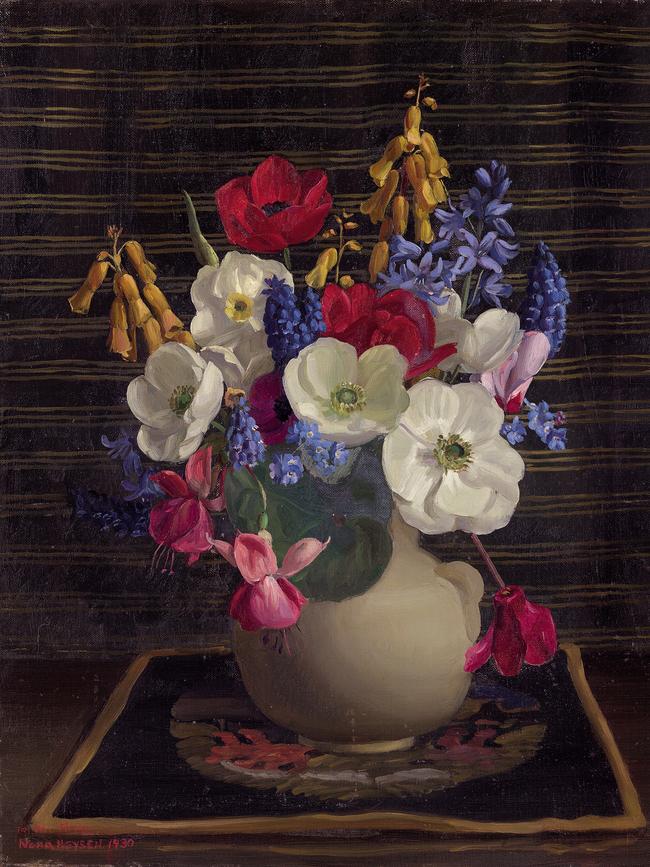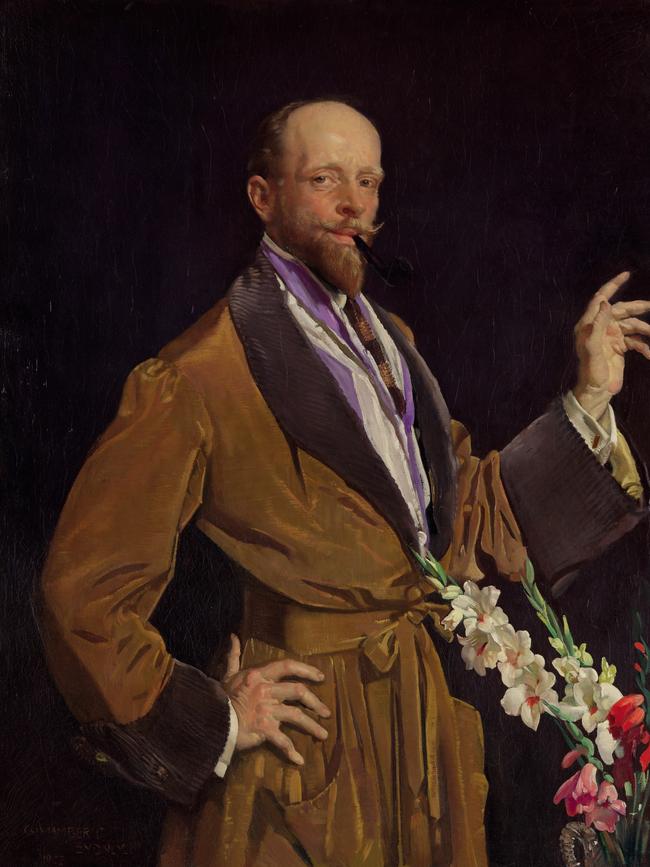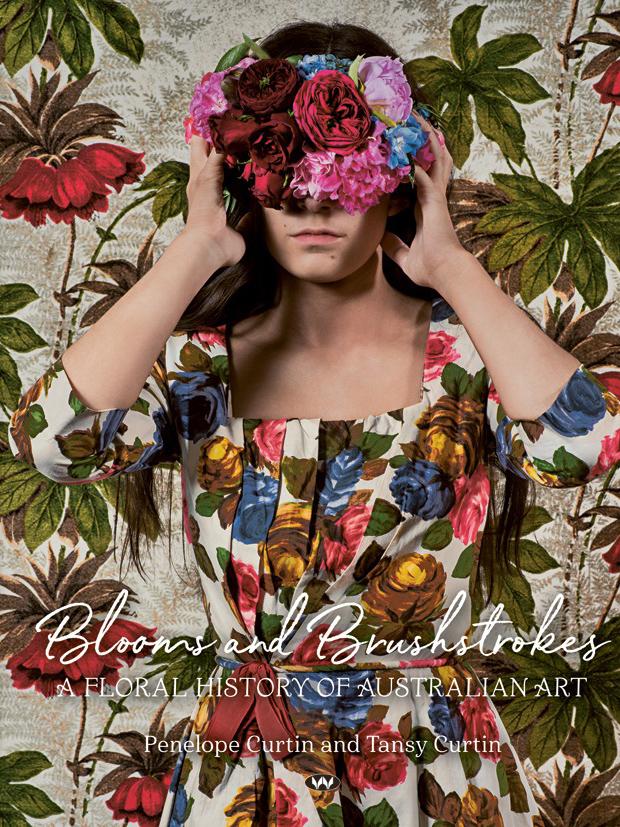Why artists love Australian gums and roses
From daisies to dahlias and pansies to zinnia — but definitely not violets — these are the flowers which have long fascinated Australia’s artists. A new book explores their enduring attraction.
- Adelaide florists reveal what flowers to buy your loved one
- Louise Woodhouse went from arranging flowers to Royal florist
Gladioli, scarlet salvias, red-hot pokers and orange marigold — well, they’re positively lower class.
At least that’s the case if you follow flowers that have been in and out of fashionable favour over the course of history.
Dahlias are a prime example: during the first half of the 20th century everyone painted dahlias. What made dahlias so irresistible? Their complex form, their bright colours?
That’s just one of the questions new tome Blooms and Brushstrokes: A Floral History of Australian Art attempts to explore.
Mother and daughter team Penelope and Tansy Curtin take readers on a journey through the history of Australian art, one flower at a time.
They begin in the late 18th century and progress through to the new media of the contemporary period.
“In our selection of works we had to be balanced, especially given the many wonderful flower works executed in the first half of the last century,” the duo write in their introduction.
“Still lifes were particularly popular subjects, largely because the still life as a subject was readily assembled and the resultant works of art were accessible — financially and intellectually — to the average collector of art.
“And a huge array of beautiful flowers were depicted at this time by the likes of Nora Heysen, Vida Lahey, Adrien Feint and Margaret Preston.”


But the sheer number of works available meant the Curtins had to omit some much-loved flower favourites.
“And sometimes we couldn’t find a work depicting a flower that was an integral member of the flower ‘canon’ — there was really nothing depicting violets,” they write.
This begged the question of the relationship of the artist to the flowers they painted: what motivated the artist to select a particular flower or group of flowers as their subject?
The shape, colour, texture and form make some flowers particularly “paintable” — the wheel-like form of the daisy or the zinnia, the striking form of the Angel’s trumpet and so on.
Furthermore, historical or cultural traditions determined that particular flowers become the artist’s model — the duo has to whittle down countless rose painting to four representations to illustrate the history of Australian art.
In their introduction the authors reference American gardening writer Eleanor Perényi, who in referencing flowers and fashion, applied Nancy Mitford’s system of “U and non-U” (upper class and non-upper class) to plants, noting that gladioli, scarlet salvias, red-hot pokers and orange marigolds are definitely non-U.
Ironically, all of these are entirely suitable for the Australian climate, and many are welcome subjects for works — because of the very characteristics that deem them non-U — their bright colours and interesting forms.

Flowers occupy a noble place in the history of art the world over. With their myriad forms, colours and symbolic meanings, they have inspired countless generations of artists to reflect upon and map their beauty, diversity and originality.
By means of individual flowers — those depicted in still lifes, floral portraits, decorative interiors and botanical illustrations and executed by a long line of Australian artists — Blooms and Brushstrokes takes the reader on a journey through the history of Australian art, from the late 18th century, when the traditions adhering to the Western art canon were transplanted into newly colonised Australia, through the rapidly developing artistic styles of the early 20th century, to the contemporary period, a period characterised by countless narratives and styles, and encompassing a host of objectives — aesthetic, social, political.
Significantly, these works of art also shine a light on the role and importance of plants and flowers in everyday life and elucidate changing floral fashions, as well as highlighting flowers in their various forms — cut flowers, pot plants and gardens.
Blooms and Brushstrokes: A Floral History of Australian Art by Penelope and Tansy Curtin (Wakefield Press, $65). $57.95 at News Shop, 31 Waymouth St, Adelaide, ph 8206 3310.
